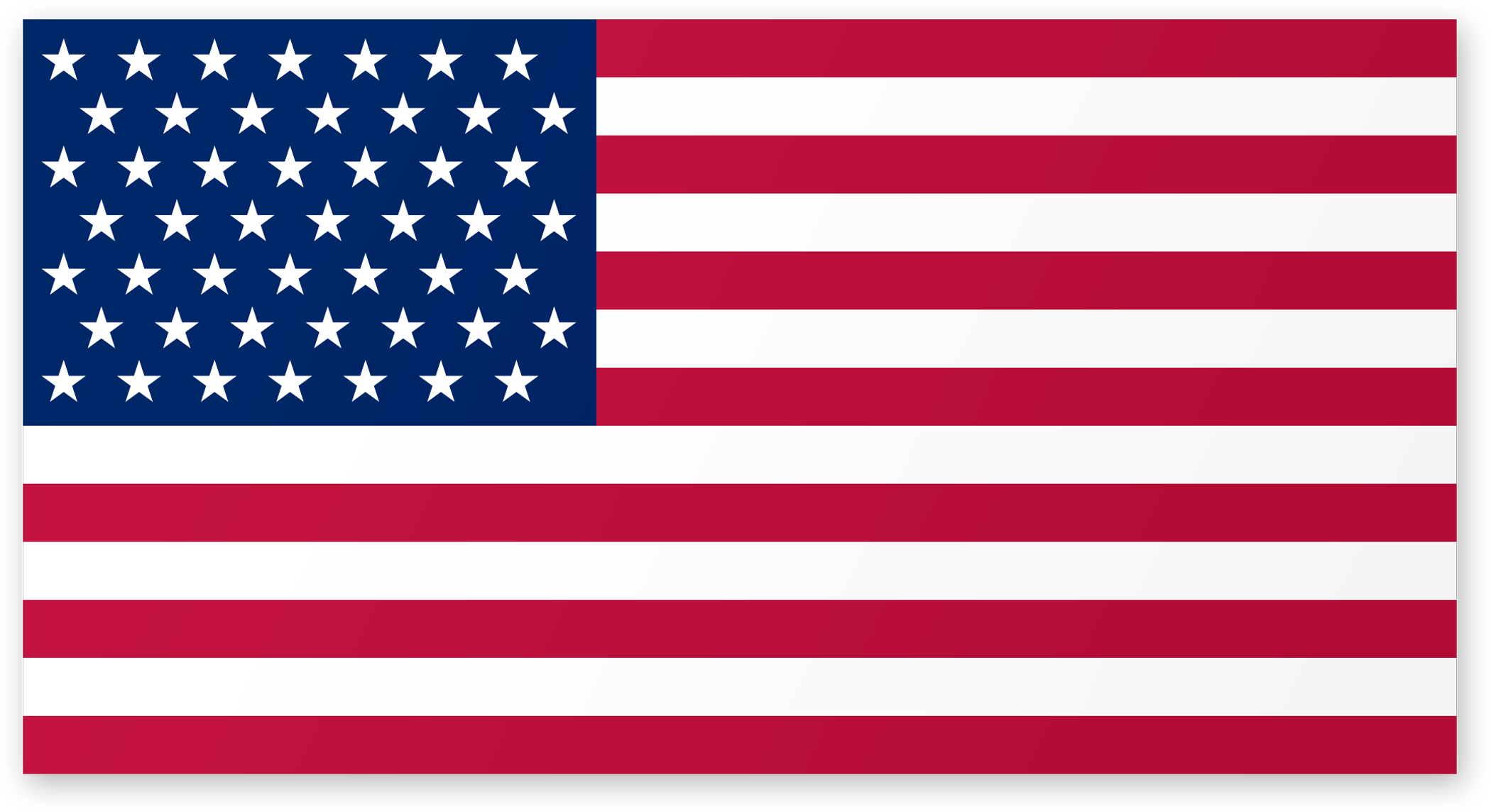Fixed Restorations

Zirganic™
Mariner Dental Lab’s Zirganic™ full-contour zirconia is partially stabilized with yttrium for an incredible flexural strength of 1,400MPa. But, Zirganic™ is more than just brown. With high translucency and incredible opalescence, unlike other full-contour zironias, Zirganic™ is as aesthetic as it is durable, making it a truly unique and comprehensive zirconia solution.
Providing both esthetics and function desired by patients. Zirganic™ is partially stabilized with yttrium and enriched with aluminium and is manufactured using a biaxial compression method (same pressure being applied above and below) so the shrinking that occurs in sintering can be checked exactly.
Product Information
Contraindications Contraindications include: When esthetic expectations are high and it is important that the restorations match surrounding natural dentition or other existing restorations If bonding is necessary to retain the restoration, bond strength is weaker and less predictable than other ceramics
Cementation Full-contour zirconia may be cemented using a resin reinforced glass ionomer such as Relyx Luting cement. When a greater bond is needed due to the lack of a retentive preparation, use resin cement like Relyx Unicam or Relyx Ultimate. Before cementing all Full-contour zirconia crowns, the interior surface of the crown needs to be cleaned with Ivoclean (Ivoclar Vivadent; Amherst N.Y.). This is critical in assuring maximum bond strength.
Preparation Shoulder preparation not needed. A mild champfer or a feather edge margin is good. 1mm buccal, lingual and occlusal reduction is ideal, but can go to .5mm in some areas, when reduction is limited. Minimum occlusal reduction of 0.5 mm; 1 mm is ideal. Adjustments and polishing: Adjust Full-contour zirconia crowns and bridges using water and air spray to keep the restoration cool and to avoid micro-fractures with a fine grit diamond. If using air only, use the lightest touch possible when making adjustments. A football-shaped bur is the most effective for occlusal and lingual surfaces (on anterior teeth); a tapered bur is the ideal choice for buccal and lingual surfaces. Polish Full-contour zirconia restorations with the porcelain polishing system of your choice.
Tech Notes Solid zirconia requires a cast gold type preparation. If adjustments are needed, use zirconia specific diamonds and rubber wheels polishing with diamond paste.
Codes D2740 Crown – Porcelain/Ceramic Substrate D6245 Pontic Porcelain/Ceramic D6740 Abutment Crown Porcelain/Ceramic
 Zirtech™
Zirtech™
Mariner Dental provides the highest quality all-ceramic found anywhere. Fabricated using the latest and best CAD/CAM technology, our industry-leading Zirtech™ full-contour zirconia is the ideal alternative to metal occlusal PFMs and cast gold restorations.
Features:
Virtually fracture-proof
Optimized microstructure for exceptional translucency
Incredibly high tensile and flexural strength
Product Information
Indications
Full-contour zirconia is so versatile, it can be used in almost any situation from singles, bridges with any combination of abutments and pontics, inlay bridges, Maryland type bridges and screw retained implants. Also an esthetic alternative to a PFM with metal occlusion due to limited space.
Contraindications
Contraindications include:
When esthetic expectations are high and it is important that the restorations match surrounding natural dentition or other existing restorations
If bonding is necessary to retain the restoration, bond strength is weaker and less predictable than other ceramics
Cementation
Full-contour zirconia may be cemented using a resin reinforced glass ionomer such as Relyx Luting cement. When a greater bond is needed due to the lack of a retentive preparation, use resin cement like Relyx Unicam or Relyx Ultimate.
Before cementing all Full-contour zirconia crowns, the interior surface of the crown needs to be cleaned with Ivoclean (Ivoclar Vivadent; Amherst N.Y.). This is critical in assuring maximum bond strength.
Preparation
Shoulder preparation not needed. A mild champfer or a feather edge margin is good. 1mm buccal, lingual and occlusal reduction is ideal, but can go to .5mm in some areas, when reduction is limited.
Minimum occlusal reduction of 0.5 mm; 1 mm is ideal.
Adjustments and polishing: Adjust Full-contour zirconia crowns and bridges using water and air spray to keep the restoration cool and to avoid micro-fractures with a fine grit diamond. If using air only, use the lightest touch possible when making adjustments. A football-shaped bur is the most effective for occlusal and lingual surfaces (on anterior teeth); a tapered bur is the ideal choice for buccal and lingual surfaces.
Polish Full-contour zirconia restorations with the porcelain polishing system of your choice.
Tech Notes
Solid zirconia requires a cast gold type preparation. If adjustments are needed, use zirconia specific diamonds and rubber wheels polishing with diamond paste.
Codes
D2740 Crown – Porcelain/Ceramic Substrate
D6245 Pontic Porcelain/Ceramic
D6740 Abutment Crown Porcelain/Ceramic

ZirtechPro™
An everyday zirconia, now more esthetic than ever. Zirtech monolithic full contour zirconia is partially stabilized with yttrium and enriched with aluminum. This combination results in positive material properties like high flexural strength (up to 1,200 MPa) and high temperature resistance—as well as a constant shrinking factor, granting the highest possible precision.No longer sacrifice top-tier beauty, precision and price to gain the strength offered from full-contour zirconia restorations. Introducing the Zirkonzahn Prettau crown, the future of zirconia crowns. Prettau Zirconia offers a translucency never seen from past zirconias. Combining the incredible aesthetics offered from Prettau Zirconia with staining techniques applied by world-class dental technicians, our crowns offer an incomparable strength and beauty, the likes of which were unimaginable in the past.
CharacteristicsZirtechPro Prettau Zirconia is partially stabilized with yttrium and enriched with aluminum. This combination results in positive material properties like high flexural strength (up to 1,200 MPa) and high temperature resistance—as well as a constant shrinking factor, granting the highest possible precision.
- Higher translucency due to optimized microstructure of the zirconia
- Monolithic full contour zirconia- no ceramic chipping
- No abrasion to the antagonist tooth
- 200% higher flexural strength thank to the elimination of veneer ceramics
- Especially suited in case of implants, reduction
Product Information
Contraindications Contraindications include: When esthetic expectations are high and it is important that the restorations match surrounding natural dentition or other existing restorations If bonding is necessary to retain the restoration, bond strength is weaker and less predictable than other ceramics
Cementation Full-contour zirconia may be cemented using a resin reinforced glass ionomer such as Relyx Luting cement. When a greater bond is needed due to the lack of a retentive preparation, use resin cement like Relyx Unicam or Relyx Ultimate. Before cementing all Full-contour zirconia crowns, the interior surface of the crown needs to be cleaned with Ivoclean (Ivoclar Vivadent; Amherst N.Y.). This is critical in assuring maximum bond strength.
Preparation Shoulder preparation not needed. A mild champfer or a feather edge margin is good. 1mm buccal, lingual and occlusal reduction is ideal, but can go to .5mm in some areas, when reduction is limited. Minimum occlusal reduction of 0.5 mm; 1 mm is ideal. Adjustments and polishing: Adjust Full-contour zirconia crowns and bridges using water and air spray to keep the restoration cool and to avoid micro-fractures with a fine grit diamond. If using air only, use the lightest touch possible when making adjustments. A football-shaped bur is the most effective for occlusal and lingual surfaces (on anterior teeth); a tapered bur is the ideal choice for buccal and lingual surfaces. Polish Full-contour zirconia restorations with the porcelain polishing system of your choice.
Tech Notes Solid zirconia requires a cast gold type preparation. If adjustments are needed, use zirconia specific diamonds and rubber wheels polishing with diamond paste.
Codes D2740 Crown – Porcelain/Ceramic Substrate D6245 Pontic Porcelain/Ceramic D6740 Abutment Crown Porcelain/Ceramic
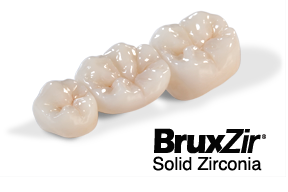
BruxZir® Premium
Our BruxZir® Premium restorations are expertly fabricated to offer extreme strength and esthetics. Every BruxZir® restoration is carefully crafted by our technicians through an in-depth process that ensures this product has premium quality. They are milled, polished, go through a hand application of stain, glazed, and then polished once again. These restorations provide the high flexural strength of up to 1465 MPa, plus esthetic translucency and coloring that mimics natural dentition. It offers complete color penetration, which ensures excellent shade consistency throughout and prevents any shade changes after occlusal adjustment.Product Information
Contraindications Contraindications include: When esthetic expectations are high and it is important that the restorations match surrounding natural dentition or other existing restorations If bonding is necessary to retain the restoration, bond strength is weaker and less predictable than other ceramics.
Cementation BruxZir zirconia may be cemented using a resin reinforced glass ionomer such as Relyx Luting cement. When a greater bond is needed do to the lack of a retentive preparation, use resin cement like Relyx Unicam or Relyx Ultimate. Before cementing all BruxZir zirconia crowns, the interior surface of the crown needs to be cleaned with Ivoclean (Ivoclar Vivadent; Amherst N.Y.). This is critical in assuring maximum bond strength.
Preparation Shoulder preparation not needed. A mild chamfer or a feather edge margin is good. 1mm buccal, lingual and occlusal reduction is ideal but can go to a minimum .5mm in some areas, when the reduction is limited. Minimum occlusal reduction of 0.5 mm; 1 mm is ideal. Adjustments and polishing: Adjust BruxZir zirconia crowns and bridges using water and air spray to keep the restoration cool and to avoid micro-fractures with a fine grit diamond. If using air only, use the lightest touch possible when making adjustments. A football-shaped bur is the most effective for occlusal and lingual surfaces (on anterior teeth); a tapered bur is an ideal choice for buccal and lingual surfaces. Polish BruxZir zirconia restorations with the porcelain polishing system of your choice.
Tech Notes Solid zirconia requires a cast gold type preparation. If adjustments are needed, use zirconia specific diamonds and rubber wheels polishing with diamond paste.
Codes D2740 Crown – Porcelain/Ceramic Substrate D6245 Pontic Porcelain/Ceramic D6740 Abutment Crown Porcelain/Ceramic

Opal™
The highly translucent Opal Prettau® Monolithic Zirconia is partially stabilized with yttrium and enriched with aluminum. This combination results in positive material properties like high flexural strength (up to 800 MPa) and high temperature resistance—as well as a constant shrinking factor, granting the highest possible precision.Product Information
Indications Full-contour zirconia is so versatile, it can be used in almost any situation from singles, bridges with any combination of abutments and pontics, inlay bridges, Maryland type bridges and screw retained implants. Also an esthetic alternative to a PFM with metal occlusion due to limited space.
Contraindications Contraindications include: When esthetic expectations are high and it is important that the restorations match surrounding natural dentition or other existing restorations If bonding is necessary to retain the restoration, bond strength is weaker and less predictable than other ceramics
Cementation Full-contour zirconia may be cemented using a resin reinforced glass ionomer such as Relyx Luting cement. When a greater bond is needed due to the lack of a retentive preparation, use resin cement like Relyx Unicam or Relyx Ultimate. Before cementing all Full-contour zirconia crowns, the interior surface of the crown needs to be cleaned with Ivoclean (Ivoclar Vivadent; Amherst N.Y.). This is critical in assuring maximum bond strength.
Preparation Shoulder preparation not needed. A mild champfer or a feather edge margin is good. 1mm buccal, lingual and occlusal reduction is ideal, but can go to .5mm in some areas, when reduction is limited. Minimum occlusal reduction of 0.5 mm; 1 mm is ideal. Adjustments and polishing: Adjust Full-contour zirconia crowns and bridges using water and air spray to keep the restoration cool and to avoid micro-fractures with a fine grit diamond. If using air only, use the lightest touch possible when making adjustments. A football-shaped bur is the most effective for occlusal and lingual surfaces (on anterior teeth); a tapered bur is the ideal choice for buccal and lingual surfaces. Polish Full-contour zirconia restorations with the porcelain polishing system of your choice.
Tech Notes Solid zirconia requires a cast gold type preparation. If adjustments are needed, use zirconia specific diamonds and rubber wheels polishing with diamond paste.
Codes D2740 Crown – Porcelain/Ceramic Substrate D6245 Pontic Porcelain/Ceramic D6740 Abutment Crown Porcelain/Ceramic

Veneers
Mariner Dental Laboratory’s Cosmetic Dental Architech Team can fabricate highly esthetic porcelain veneers that seamlessly combine the art and science of dental bonding. Mariner creates strong, naturally translucent restorations using high quality materials and superior craftsmanship.
Product Information
Indications Changed color of anterior teeth, Incorrect shape of tooth or position in dental arch, Enamel defects such as enamel hypoplasia, attrition of teeth as a consequence of trauma, wide interproximal spaces like diastema.
Contraindications Bruxism and parafunction, Pathology of bite, more than 50% of enamel affected by pathology.
Tech Notes For facial reduction three wheel diamond depth cutter should be used for orientation grooves. For proximal reduction – round end tapered diamond bur is used as an extension for facial reduction.
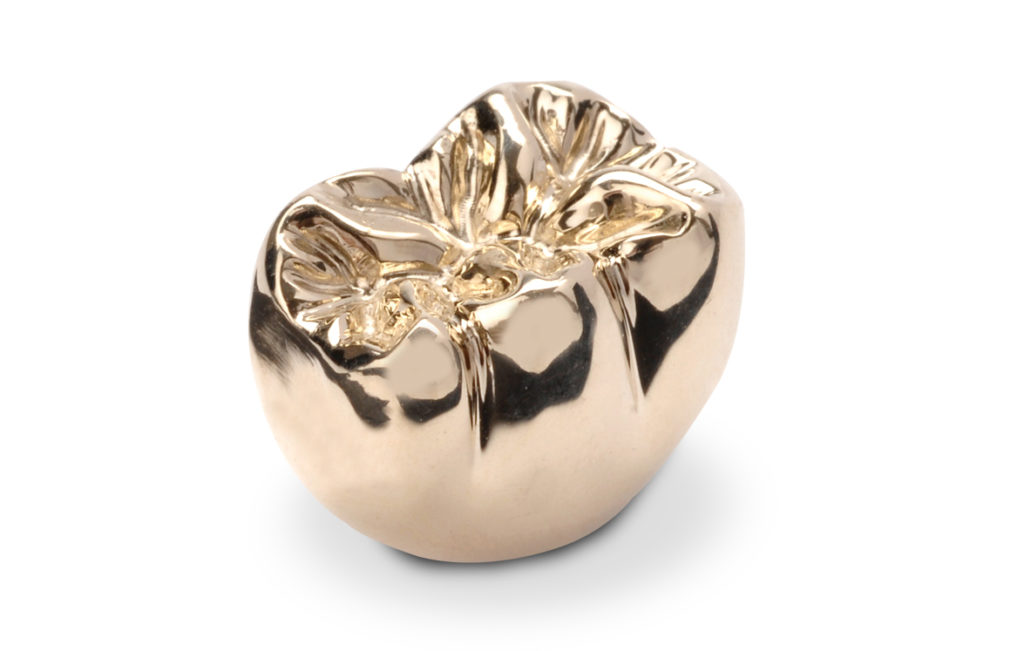
Full Cast
Mariner Dental Laboratory uses Argen gold for our full-cast restorations, ensuring high quality and endurable strength for this popular restorative option.
Product Information
Indications
Full-cast gold crowns are indicated for crowns, veneers, inlays, onlays and bridges.
Contraindications
Full-cast gold crowns are contraindicated for partials and implants.
Preparation
Inlays and onlays can also be fabricated as a full-cast restoration. Feather-edge margin preparations are indicated for full-cast restorations, but any margin preparation may be used.
Cementation
Panavia 21 (Must be tinplated if precious metal is used)
Glass ionomer cement (GC Fuji, GC America)
Zinc Phosphate Polycarboxylate Resin Ionomer cement (RelyX, 3M ESPE)
Tech Notes
All castings are made with a metal alloy, be it non-precious, semi-precious or precious metals. Alloys are classified by their content.
Base – contents include non-precious, Chrome Cobalt or Titanium
Noble – consists of 25 percent precious alloy
High Noble – consists of 60 percent precious metal with at least 40 percent being gold
Alloy type refers to the hardness and/or softness of the material.
Type I – Extra soft
Type II – Soft
Type III– Hard
Type IV – Extra Hard (Rigid)
Non-Precious, Noble 20, White High Noble – Type IV – Very hard and rigid. These crowns are more difficult to adjust and re-polish than alloys with a high gold content.
Full Cast 40 – Type III – Yellow high noble alloy. Brand name currently used is Argenco 40 HN.
Full Cast 52 HN – Type III – Yellow high noble alloy. Brand name currently used is Argenco 52.
Full Cast 75- Type III – Yellow high noble and is an upgrade from full cast 52. The gold is slightly more yellow in color. Brand name currently used Argenco 75.
Codes
D2790 Crown Full-Cast Hi-Noble Metal
D2791 Crown Full-Cast Predominantly Base Metal
D2792 Crown Full-Cast Noble Metal
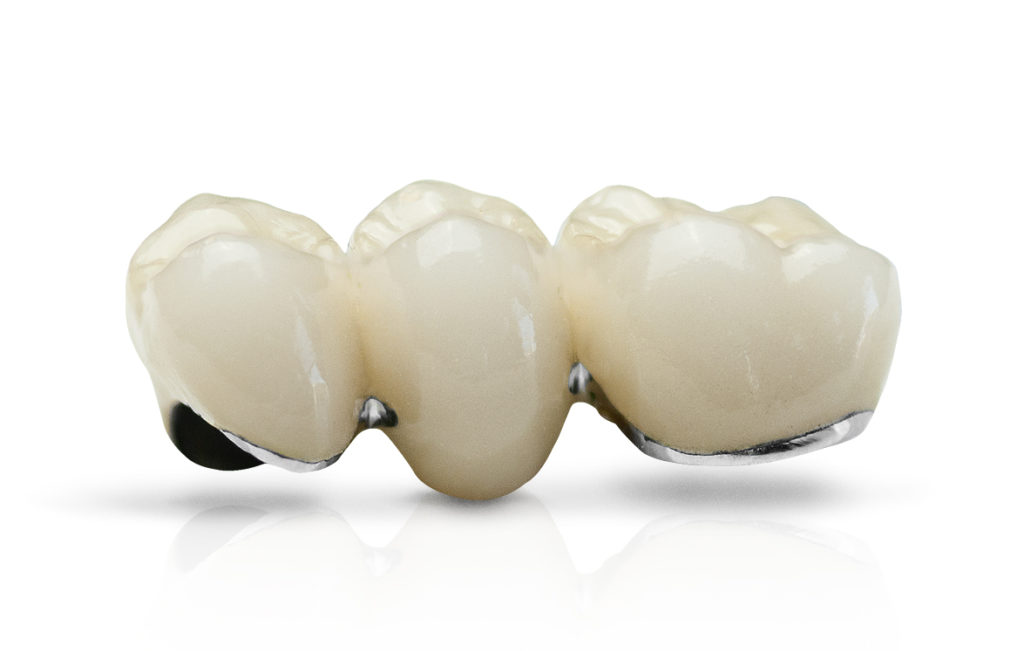
PFMs
PFMs are the tried-and-true union of strength and esthetics. At Mariner, we offer NP and SP PFMs.
Product Information
Indications
Our PFMs can be used for crowns and bridges (up to fourteen units). PFMs can be manufactured to non-precious, semi-precious, and yellow high noble copings and can be used in conjunction with cast partials and implants.
Contraindications
Contraindicated when the patient has a metal allergy or when the size of the tooth pulp is negligibly smaller thus compromising the tooth preparation process. It is also contraindicated when the clinical tooth crown is very short and lacks the required stability including retention that is enough to provide the space for porcelain and metal.
Preparation
The ideal preparation for PFMs is a chamfer margin preparation. If a porcelain labial margin is prescribed, then a shoulder margin preparation is required. Feather-edge margin preparations are indicated for full-cast restorations.
Cementation
Panavia 21 – tin plated
Glass ionomer cement (GC Fuji, GC America)
Zinc Phosphate Polycarboxylate
Resin Ionomer cement (RelyX, 3M ESPE)
Tech Notes
If an adjustment is required on the ceramic, use a fine diamond with water and air to keep the crown cool. To contour the ceramic, polish with a pink rubber wheel and diamond polishing paste (Brasseler, Shofu, Vident).
Codes
D2750 Crown Porcelain fused to high noble
D2751 Crown Porcelain fused to non-precious
D2752 Crown Porcelain fused to semi-precious
D6750 Crown Porcelain fused to high noble (bridge units)
D6751 Crown Porcelain fused to non-precious (bridge units)
D6752 Crown Porcelain fused to semi-precious (bridge units)
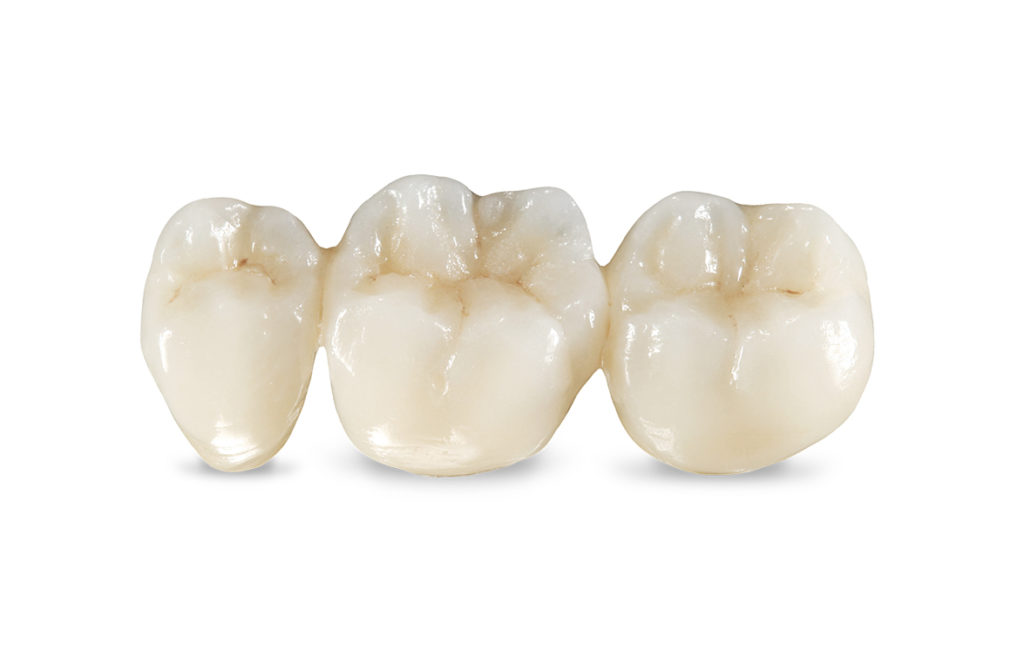
IPS e.max®
The monolithic structure of lithium disilicate gives IPS e.max® its strength, opalescence and translucency. These monolithic properties result in high flexural strength (360 – 400 MPa), excellent fracture resistance, stunning light-diffusion qualities, and a wide range of practice-building indications.
Product Information
Indications
IPS e.max press is indicated for full anterior or posterior crowns, veneers, inlays, onlays,as well as three-unit bridges having only one pontic with the second bicuspid as the most distal abutment.
Contraindications
Bridges which include molars, Maryland style bridges and bridges which have a short vertical height that does not allow for adequate connector height.
Cementation
IPS e.max layered – can be either cemented using a resin reinforced glass ionimer such as Relyx Luting cement. Or bonded using a resin cement, when extra strength is needed due to lack of retention on the prep, use a resin cement such as Relyx Unicem or Relyx Ultimate.
Preparation
Anterior full-coverage crowns require a chamfer or shoulder margin. A circular shoulder is prepared with rounded inner edges or a chamfer at an angle of 10-30°: the width of the shoulder/chamfer is approx. 1 mm. Facial reduction is 1.5 – 2 mm; 1 – 1.5 mm lingual contact clearance. Incisal reduction is 1.5 – 2 mm with rounded internal line angles, and an incisal edge at least 1mm wide to permit optimum milling of the incisal edge during CAD/CAM processing. Posterior full-coverage crown requires a chamfer or shoulder margin. A circular shoulder is prepared with rounded inner edges or a chamfer at an angle of 10-30°: the width of the shoulder/chamfer is approx. 1 mm. Occlusal reduction is 1.5 – 2 mm: axial reduction (buccal, lingual and interproximal) is 1.5 mm with rounded internal line angles.
Tech Notes
If adjustments are needed, use fine diamonds with water and light pressure. Always remove the crown when adjusting or bond/cement crown before adjustments are made.).
Codes
D2740 Crown
D2610 Inlay for 1 surface
D2620 Inlay for 2 surfaces
D2630 Inlay for 3 surfaces
D2962 Labial Veneer
D2783 Crown 3/4 Porcelain Ceramic (does not include veneers)



